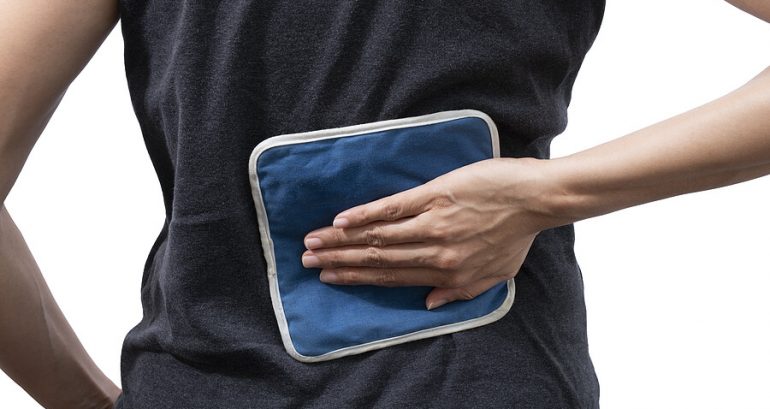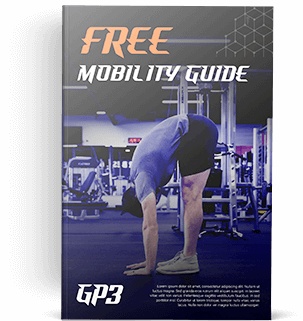Key Points:
1. If you have an injury, don’t use ice! This will actually slow the healing process.
2. Our main job is not to interfere with the body’s natural healing process.
3. We can do this by getting as much pain-free movement as possible.
Estimated Reading Time: 4-8 minutes
In last week’s piece, I mentioned that we have an obsession with being the “doer.” This is understandable. We want to feel as if we have complete control and autonomy over the things that happen in our lives. The degree to which this is true is probably a good topic to discuss in the future, but today we’re going to focus on something much more concrete.
Injuries and Ice
In case you haven’t heard, ice is out! In fact, the very doctor who invented and literally wrote the book on the RICE protocol said in 2013 that we now know that icing an injury delays the healing process.
First, in case you aren’t familiar, RICE stands for Rest, Ice, Compression, and Elevation. Dr. Gabe Mirkin wrote a book about this in the 1970’s, called Sportsmedicine, and for nearly 50 years, these were the four key steps that doctors, athletic trainers, and physical therapists recommended for people dealing with injuries.
In short, we know that compression and elevation are still effective, but complete rest and icing are two of the worst methods you can possibly use to help your body heal.
So, why was ice so popular for so long?
In many physical therapy clinics, you’d still be assumed to be spouting blasphemy if you told its practitioners that ice delays healing. Icing has been common practice for so long that it’s become gospel. So, why is that?
Well, first, ice does temporarily relieve pain to wherever you apply it. Ice numbs the surrounding tissue, which lowers the subjective intensity of the experience of pain. But, here’s the problem. The injured tissue is still injured. It isn’t actually better; it just feels better, at least for a while. Dangerously, this could lead someone to incorrectly believe that they are actually better and therefore attempt activities that will lead to worsening their injury. This is horribly common with athletes, many of whom use ice after every single practice and game.
Even worse, according to the same article from Dr. Mirkin, a 2011 study found that immediately after icing, speed, strength, power production, and coordination are reduced. These are the last things an athlete needs! Hopefully, there aren’t too many practitioners recommending ice before competition, but it’s not uncommon to see athletes with bags of ice taped to their knees and ankles during a timeout or halftime.
Next, I believe icing is popular because it’s pretty unpleasant at first. Counterintuitively, this helps preserve myths about its effectiveness. Many people have an almost unconscious bias that in order to achieve what they want, they need to suffer. Healing an injury is no different.
The line of thinking can go something like this. “Well, icing sucks, but if I’m tough enough to get through it, I’ll have earned the reward of my injury healing quicker.” While this may be understandable, it’s deeply flawed. It facilitates a “push through the pain” mindset that ultimately makes things worse. And let’s be clear, here. Pain is your body’s way of telling you to stop doing the activity causing it. If you ignore this, you will hurt yourself even more. Full stop, guaranteed. It may not happen every time, but it will happen eventually.
Ice, Inflammation, and the lymphatic system
“Hang on,” you might be thinking, “doesn’t ice reduce inflammation? Isn’t that a pretty huge benefit?”
Well, actually, no.
It turns out, inflammation is a necessary part of the healing process. I’m simply going to quote Dr. Mirkin here:
When you damage tissue through trauma or develop muscle soreness by exercising very intensely, you heal by using your immunity, the same biological mechanisms that you use to kill germs. This is called inflammation. When germs get into your body, your immunity sends cells and proteins into the infected area to kill the germs.
When muscles and other tissues are damaged, your immunity sends the same inflammatory cells to the damaged tissue to promote healing. The response to both infection and tissue damage is the same. Inflammatory cells rush to injured tissue to start the healing process (Journal of American Academy of Orthopedic Surgeons, Vol 7, No 5, 1999).
The inflammatory cells called macrophages release a hormone called Insulin-like growth Factor (IGF-1) into the damaged tissues, which helps muscles and other injured parts to heal. However, applying ice to reduce swelling actually delays healing by preventing the body from releasing IGF-1.
Further, ice causes surrounding blood vessels to constrict, thus blocking the very blood flow that is necessary for healing. When this happens, the lymphatic system, a crucial component of the circulatory and immune systems, can’t do its job. This system regulates the proper amount of inflammation and swelling necessary to repair damaged tissue. Just like our ability to pump our blood, filter the air we breathe, and digest food, we’ve evolved this ability over millions of years.
Do we really think slapping on a cold pack for 20 minutes is superior to the innate knowledge of the body?
Well in short, yes, some of us do seem to think that.
This goes hand in hand with being the “doer,” because icing feels like something we’re actively doing. Instead, we need to reframe how we view our role in healing.
Primarily, it’s to not make things worse, get out of the way, and let the body do its job. It’s time for a couple examples. Let’s say we cut our finger while chopping veggies for dinner, but not so badly that we needed to visit the ER. Depending on the severity of the cut, we may put on a band-aid and some ointment, but that’s about it. We realize that if we just leave the cut alone, our bodies will create a scab and stitch the injured tissue back together. We know that we don’t have to do anything specific, we just need to create an environment conducive to healing.
Now, let’s look at an ankle sprain. Deep down, we probably know that we can’t actively do much to repair damaged ligaments. The body needs to do that without us exerting any direct influence. And yet, we want to do so much. Icing, Advil, cortisone shots, braces, physical therapy, oh my!
Some of these interventions, especially the last one, are more valuable than others. But, it’s crucial to remember that all we’re doing is creating an environment that allows healing. We’re not actually doing the healing. Or at least, Self 1 isn’t. Read this if that was confusing.
So, what can we do to create an environment conducive to healing?
The blog from the British Journal of Sports Medicine has the best approach I’ve found so far. It uses the somewhat cheesy-sounding acronym of PEACE & LOVE, but if you can move past that, you’ll find top-notch recommendations.
P-Protection
Avoid activities and movements that increase pain during the first few days after an injury.
E-Elevation
Elevate the injured limb higher than the heart as often as possible.
A-Avoid Anti-Inflammatories
Avoid taking anti-inflammatory medications as they reduce tissue healing. Avoid icing.
C-Compression
Use elastic bandage or taping to reduce swelling.
E-Education
Your body knows best. Avoid unnecessary passive treatments and medical investigations and let nature play its role.
&
L-Load
Let pain guide your gradual return to normal activities. Your body will tell you when it’s safe to increase load.
O-Optimism
Condition your brain for optimal recovery by being confident and positive.
V-Vascularisation
Choose pain-free cardiovascular activities to increase blood flow to healing tissue.
E-Exercise
Restore mobility, strength, and proprioception by adopting an active approach to recovery.
Greg’s Note: Eagle-eyed readers may have noticed that this list says that compression reduces swelling, while earlier, I said that you don’t want to reduce swelling. Compression and Elevation can reduce swelling, but they don’t do so in a way that interferes with blood flow or the lymphatic system’s normal functioning. Ice and anti-inflammatories can’t say the same.
Did you notice the common themes?
The two that stand out are:
1. Not engaging in activities that cause pain, but doing plenty of things that don’t.
2. Not interfering with the body’s natural response to injury.
Some of this may sound too passive, and a lot of it requires us to listen to rather than ignore what our bodies are telling us. This can be very tough, since we’re often conditioned to “just push through it” when our bodies are indicating a need. We need to work with our bodies, not against them. This means acknowledging that sometimes, all we can do is be patient and make an effort not to make things worse.
So ditch the ice. Your body doesn’t need it.
But it could use a little more peace and love.

